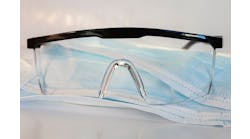I’m in Dubai as I write this, and it’s a sweltering 111 degrees at midday. When I flew in this morning at 6:30, it had already climbed to 90 degrees. Visiting collision centers and seeing predominantly either Indian or Filipino techs reshaping exotic cars, you really do have to take your hat off to the amazing work a body shop technician does under such difficult circumstances.
Just the other day I was trying to explain to a colleague how difficult this business is, as we started to discuss the door rate, or as many call it in the U.S., the labor rate per hour. In my first venture running my own body shop, which I sold in 1989, we charged the equivalent of $30 per hour for our services. In the U.K., one new work provider coming into the market has a labor rate of $33.50. That’s 24 years later and only a $3.50 increase!
It defies belief sometimes the labor rates at which some body shop owners will repair cars—and then they wonder why they don’t make any money. In the U.K. market, the real rate should be around $62 to allow the business to invest in the latest tooling, training and technology to be able to repair the modern motor vehicle. Of course, most insurance carriers would scoff at having to pay such high rates, but in reality, what difference would it really make to the overall cost of repair?
Contrary to popular belief, the actual repair to the vehicle is only a relatively small percentage of the total claims fee that is paid out. The average cost of processing most U.K. claims in total is in the region of $7,800. This has to cover the average cost of Personal Injury (PI) claims. (By the way (and slightly off subject), it’s a fascinating fact that there are more people in the U.K. with supposed neck injuries, or whiplash, than in the whole of Europe combined, costing insurers $19 billion per year.) This PI cost is around $4,000 on average. Add to that the cost of referral fees for nonfault PI and vehicle rental—referrals sometimes as much as $1,000—and I’ve seen rental claims go as high as $80,000. The cost of the claim handling itself and the costs around the repair actually add up to a significant amount.
When you subtract the average actual cost paid out to the repairer (with a typical deductible of, say, $500), then it is actually only about $800 that the insurer pays for the repair itself. Now, if we were to ask for a sensible rate per hour (say $15 above the current prices), with an average repair time of, say, 15 hours, it adds just $225 to the total repair cost. As a percentage, this is actually less than 3 percent.
Net result? The body shop makes more money and has a more sustainable future. The body shop invests in training and new technology, which in turn drives the repair cost down, some of which could be passed to the insurance carrier. Staff can be paid a little more and, working in the right culture, are likely to stay longer and reduce training costs.
The insurer now deals with a more professional collision center as they are now able to invest in their future and grow their business. There is less bad debt. Better body shop systems and invested processes mean less cycle time. That’s a win-win.
Now I’m not a great mathematician, but an actual invoiced increase in the repair itself by less than 3 percent of total claims cost for all that gain surely is a no-brainer. Unfortunately, this industry still has a long way to go in growing up, resolving conflict and achieving mutual gain (not unlike our politicians). There seems to be a culture of beating up on everyone about price, not focusing on mutually finding solutions that bring a win to the insurer, a win to the body shop, a win to the supply chain and ultimately a win to the end customer.
There is a distinct lack of trust. In many cases, neither party sits down and actually discusses a mutual solution for fear of being shafted by the other. Real business successes are born out of open relationships, one of ensuring that your actions do not disadvantage others within the chain. I know I’m lucky enough to see a variety of different collision scenarios, and am able to draw from the good, the bad and the downright ugly. But in order to get the gains all of us need, we have to work together to achieve a mutually beneficial goal. Common sense needs to prevail.
Of course, on the surface, it seems miles away, and it seems impossible. But it’s not really. It simply takes a series of open meetings so that each party understands each other’s problems. With that on the table, then it’s only a matter of making sure that the solutions to overcome those problems are mutually beneficial, with a bit of smart thinking.
For both insurers and collision shops to be successful in the very near future, collaboration and dialogue at the right level has to take place, where neither see each other as enemies or adversaries, but as mutual partners in solving their common customers’ problems.
Jon Parker is managing director of the Byteback Group, a U.K.-based information technology and services company aimed at advancing the collision repair industry. Parker can be reached at [email protected].



